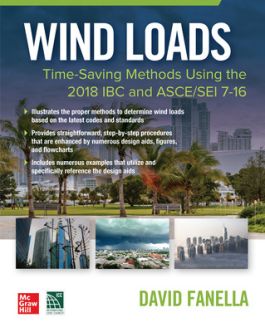Wind Loads: Time Saving Methods Using the 2018 IBC and ASCE/SEI 7-16
Step 1. Download Adobe Digital Editions Both PC and Mac users will need to download Adobe Digital Editions to access their eBook. You can download Adobe Digital Editions at Adobe's website here.
Step 2. Register an Adobe ID if you do not already have one. (This step is optional, but allows you to open the file on multiple devices) Visit account.Adobe.com to register your Adobe account.
Step 3: Authorize Adobe Digital Editions using your Adobe ID. In Adobe Digital Editions, go to the Help menu. Choose “Authorize Computer.”
Step 4: Open your file with Adobe Digital Editions. Once you’ve linked your Adobe Digital Editions with your Adobe ID, you should be able to access your eBook on any device which supports Adobe Digital Editions and is authorized with your ID. If your eBook does not open in Adobe Digital Editions upon download, please contact customer service
This practical guide provides engineers with a visual overview of the code provisions pertinent to wind loads. Free of complicated and confusing explanations, the book includes numerous design aids, figures, and flowcharts that clearly demonstrate the code provisions. Written by a recognized expert in the field, Wind Loads: Time-Saving Methods Using the 2018 IBC and ASCE/SEI 7-16 contains simplified, step-by-step procedures that can be applied to main wind force resisting systems and components and cladding of building and nonbuilding structures. Examples and companion online Excel spreadsheets can be used to accurately and efficiently calculate wind loads.
Coverage includes wind load requirements for:
- Wind velocity pressure
- Gust effects on rigid and flexible buildings and other structures
- Main wind force resisting systems of buildings and other structures
- Components and cladding of buildings and other structures
- Enclosed, partially enclosed, partially open, and open buildings of all heights
- Low-rise buildings
- Roof overhangs and parapets
- Building appurtenances and other structures
- Solid freestanding walls and signs
- Chimneys, tanks, open signs, single-plane open frames, and trussed towers
- Rooftop structures and equipment
- Circular bins, silos, and tanks
- Rooftop solar panels

